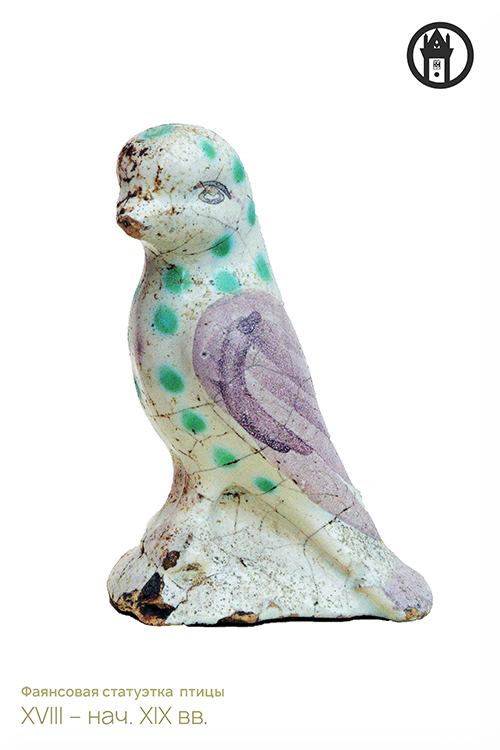In the second half of the 17th century Polotsk turned into a huge construction site that changed its appearance beyond recognition. At the same time are being built Monastic complexes of Catholic and Orthodox monasteries. At that time private construction was gaining momentum. Buildings acquire baroque forms with elements of classicism.
Baroque, like the ideology of Sarmatianism (the cult of the nobility in the Poland Lithuanian Commonwealth), in the 17th century provided for the need to acquire self-respecting burghers and gentry luxury goods and adherence to European fashion. In rich residential buildings for ceremonial rooms were often arranged fireplaces, the upper shelves of which were decorated with statuettes.
That small faience bird, found in the collapse of the 18th-century building on one of the main Polotsk streets, was served for this purpose. The statuette itself depicts a pigeon painted on white enamel background with transparent colors. Small chips tell about its long use, because good porcelain and earthenware in the 17th century could not afford even every wealthy tradesman.
Found in Polotsk porcelain and faience products of the 17th century a great rarity.

